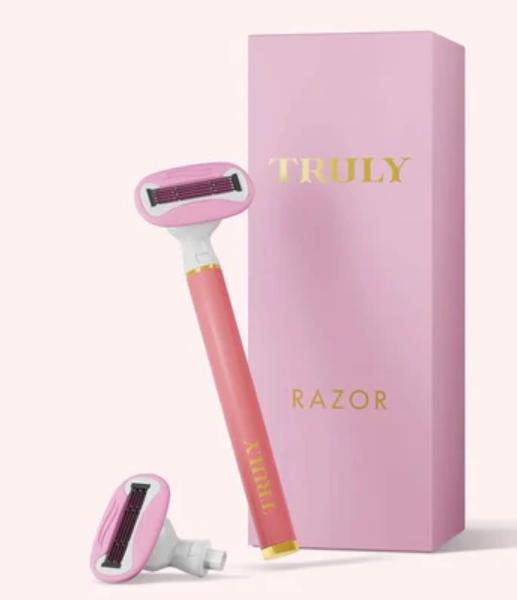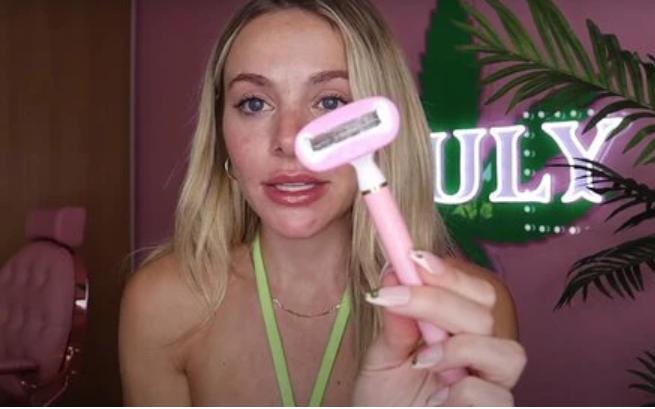"Shaving is a common part of many people’s grooming routines, but questions often arise about its impact on skin health. One of the most frequently asked questions is, is shaving bad for your skin? While some people swear by smooth, freshly-shaved skin, others experience irritation and unwanted side effects. This blog aims to shed light on the potential risks and benefits associated with shaving, address common myths, and provide practical tips on how to maintain healthy skin while shaving.

How Shaving Affects Your Skin: What You Need to Know
Shaving involves removing hair by cutting it at the skin’s surface. This process can impact your skin in several ways, especially if not done correctly.
Razor Burn and Skin Irritation
Razor burn and skin irritation occur when the blade scrapes against the skin, causing microscopic cuts. This can lead to redness, itching, and a burning sensation. Ensuring your blade is sharp and using a shaving cream can reduce these effects.
Dryness and Dehydration
Regular shaving can strip the natural oils from your skin, leading to dryness and dehydration. This happens because the protective barrier of the skin is disturbed, causing moisture loss. Using a moisturizing shaving gel and hydrating after shaving helps prevent this.
Ingrown Hairs and Infection
Ingrown hairs occur when shaved hair grows back into the skin, causing inflammation and sometimes infections. This is more common for people with curly hair. Exfoliating before shaving and shaving in the direction of hair growth can minimize this risk.
Is Shaving Bad for Your Skin: Debunking Common Myths
There are several myths surrounding shaving and its impact on skin health. Let’s debunk a few.
Myth 1: Shaving Causes Skin to Become Thicker
People often think that shaving makes hair grow back thicker and darker. In reality, shaving has no effect on the thickness or color of hair. The blunt tip of regrowing hair may feel coarser, but it doesn’t indicate increased thickness.
Myth 2: Shaving Increases Risk of Wrinkles
Another myth is that shaving can cause wrinkles. There’s no scientific evidence supporting this claim. Wrinkles are primarily caused by aging, sun exposure, and loss of skin elasticity, not by shaving.
Myth 3: Shaving Leads to More Breakouts
Some believe that shaving causes acne breakouts. While shaving can irritate the skin if not done properly, it doesn’t cause acne. In fact, proper shaving can help remove dead skin cells and prevent clogged pores.
How to Prevent Skin Damage from Shaving
Preventing skin damage while shaving involves using proper techniques and products.
Use the Right Razor and Shaving Cream
Choosing the right razor is crucial. Opt for a sharp, clean razor with multiple blades for a smoother shave. Additionally, use a shaving cream that suits your skin type to provide adequate lubrication and protection.
Shave in the Right Direction
Shaving against the grain can lead to cuts and ingrown hairs. Always shave in the direction your hair grows to minimize irritation and achieve a smoother finish.
Moisturize After Shaving
Post-shaving hydration is important. Use a moisturizer or aftershave lotion to soothe the skin and replenish lost moisture, reducing the risk of dryness and irritation.
Benefits of Shaving for Skin Health
Despite the risks, shaving can also offer several benefits for skin health.
Exfoliation and Skin Renewal
Shaving acts as a physical exfoliant, removing dead skin cells and promoting skin renewal. This can result in a more vibrant and smoother complexion.
Prevention of Ingrown Hairs
Regular shaving can help prevent the buildup of dead skin cells, reducing the chances of ingrown hairs. Keeping the skin clean and exfoliated plays a crucial role.
Smooth Skin and Improved Appearance
One of the most apparent benefits of shaving is achieving smooth skin. This can enhance your appearance, making your skin look well-groomed and cared for.
When to Seek Medical Advice for Skin Issues After Shaving
While shaving-related skin issues are usually mild, some cases may require professional attention.
Severe Rash or Infection
If you experience a severe rash or notice signs of infection (redness, swelling, pus), it’s important to seek medical advice. Persistent issues could require treatment.
Persistent Ingrown Hairs
Chronic ingrown hairs that don’t respond to regular care should be evaluated by a dermatologist. They can provide tailored treatments to manage the condition effectively.
Chronic Skin Irritation
If constant irritation occurs despite following proper shaving techniques, consult a healthcare provider. They can help identify underlying causes and recommend suitable solutions.

Conclusion
Shaving can impact your skin in various ways, both positive and negative. Is shaving bad for your skin? By following proper techniques and using the right products, you can enjoy the benefits of shaving while minimizing potential pitfalls. Caring for your skin before, during, and after shaving is essential for maintaining healthy, smooth skin.
FAQ
Can shaving cause permanent damage to your skin?
Shaving, when done correctly, typically does not cause permanent damage. However, improper techniques can lead to skin irritation and other issues, which are usually reversible with proper care.
What is the best way to prevent irritation after shaving?
To prevent irritation, use a sharp razor, shave in the direction of hair growth, and apply a moisturizing aftershave lotion. Proper skin preparation and post-shave care are key.
Does shaving affect sensitive skin differently?
Yes, sensitive skin may be more prone to irritation, dryness, and razor burn. Those with sensitive skin should use products designed specifically for sensitive skin and follow gentle shaving practices.
